The rise and fall of the TLR: why the twin-lens reflex camera is a real classic
The twin-lens reflex camera, that comes with two objective lenses of the same focal length, is still worth investing in
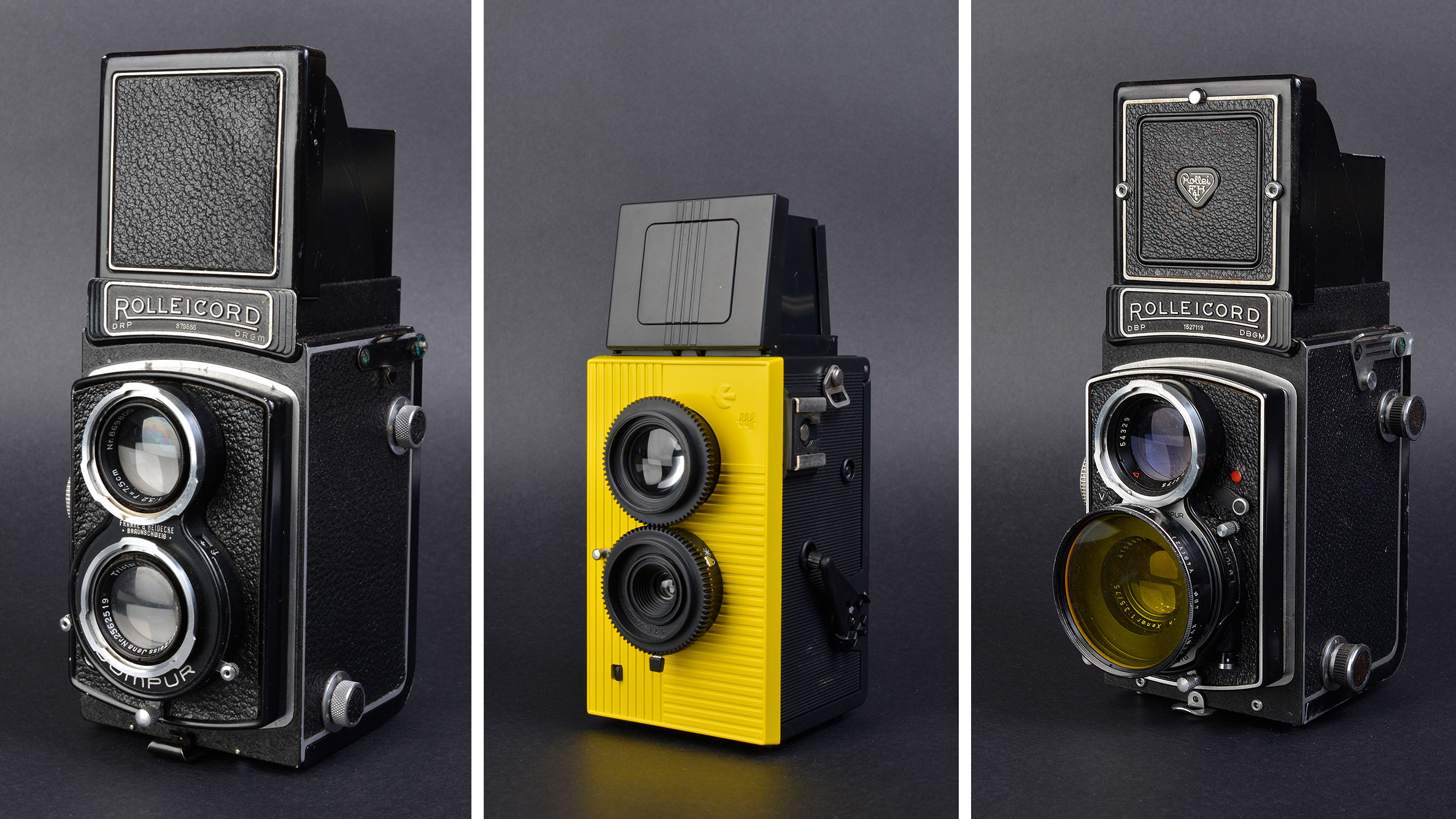
For quite a while – essentially from the 1920s to the 1950s – the twin lens reflex camera ruled supreme in the rollfilm camera world, but then along came the SLR and it quickly fell out of favor. Yet the TLR configuration was popular for a lot of very good reasons. The inevitable demise of the DSLR as the mirrorless configuration becomes dominant in interchangeable lens cameras can be rightly considered yet another big change in the history of photography.
While it’s unlikely anything will ever match the cataclysmic transition from film to digital, there have been plenty of shifts in the market that are just as dramatic as the switch from DSLR to mirrorless.
From the 1920s through to the early 1960s, the twin-lens reflex configuration reigned supreme in rollfilm medium format cameras. Just about every major camera maker – and quite a few smaller ones – built TLRs and the legendary Rolleiflex in particular was the choice of professionals in most fields of practice.
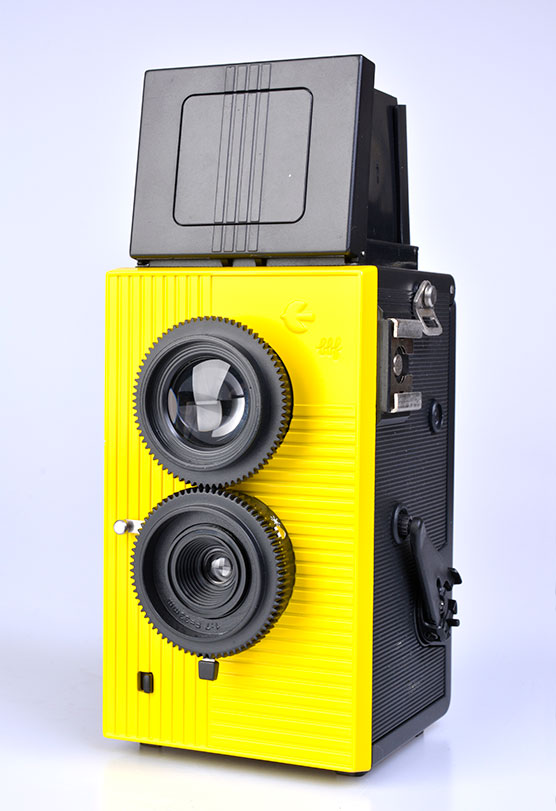
As the name suggests, the TLR employs two lenses of the same focal length, arranged one above the other. The lower lens is the ‘taking’ lens, while the upper lens is the viewing lens, behind which is a fixed mirror set at 45-degrees to reflect the image up to a focusing screen. The mirror accounts for the word “reflex” and the twin lens arrangement was designed to give a viewfinder image that was very close to the one that was recorded by the taking lens. There is some parallax error – the slight difference in the two lenses’ fields of view – but it was negligible when focusing over long distances. It was more of an issue when shooting close-up, but many TLRs had a moving indicator in the viewfinder to show the difference in framing.
For focusing, both the viewing lens and the taking lens moved together on the same lens plate, in most cases via a bellows arrangement. As the reflex mirror is fixed, the TLR was mechanically very reliable and quiet, without any blackout in the finder during an exposure. The taking lens incorporates a leaf-type shutter, so flash sync is possible at all speeds.
• Best medium format cameras in 2021
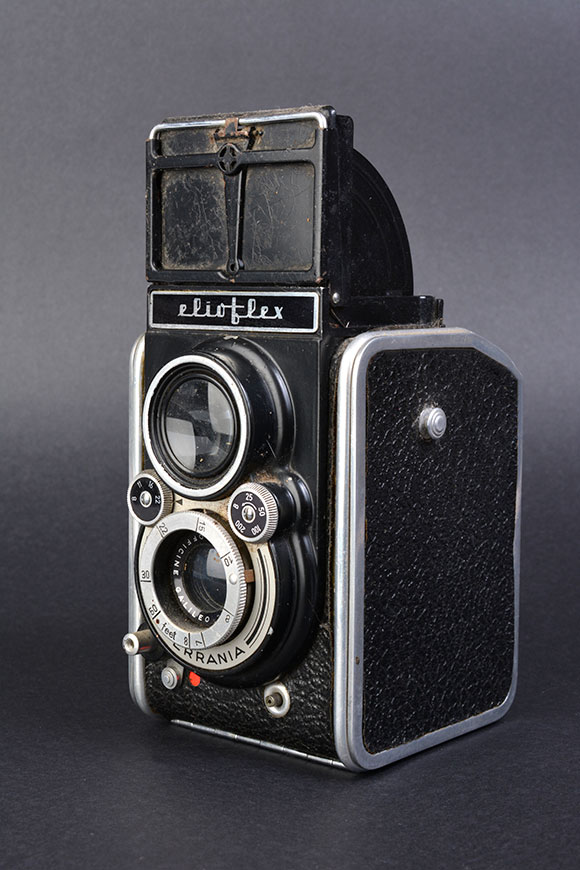
Over time, these features were promoted as attributes compared to the SLR or single lens reflex camera, but in the TLR’s early days they were simply related to the configuration and the moving mirror was still in the future. Over time too, the disadvantages of the design came to be accentuated as the SLR gained in popularity. The boxy body was only really comfortable to handle when using the waist-level finder and, additionally, this image is always reversed. Just about all TLRs had fixed lenses. The separate lens for the viewfinder meant that many TLRs didn’t have depth-of-field preview and it was also impossible to preview the effects of filters. Finally, most leaf shutters have a top speed of 1/500 second with a few, later on, allowing for a setting of 1/1000 second.
In practical terms, the cons easily outweighed the pros, which became even more apparent as the rollfilm SLR was perfected with the added flexibility of a modular, interchangeable lens design, such as was first introduced by Hasselblad in 1948 with its 1600F. And, after Nikon did the same thing with 35mm in 1959 when it introduced its F system, rollfilm itself was subsequently also under increasing threat from the smaller format.
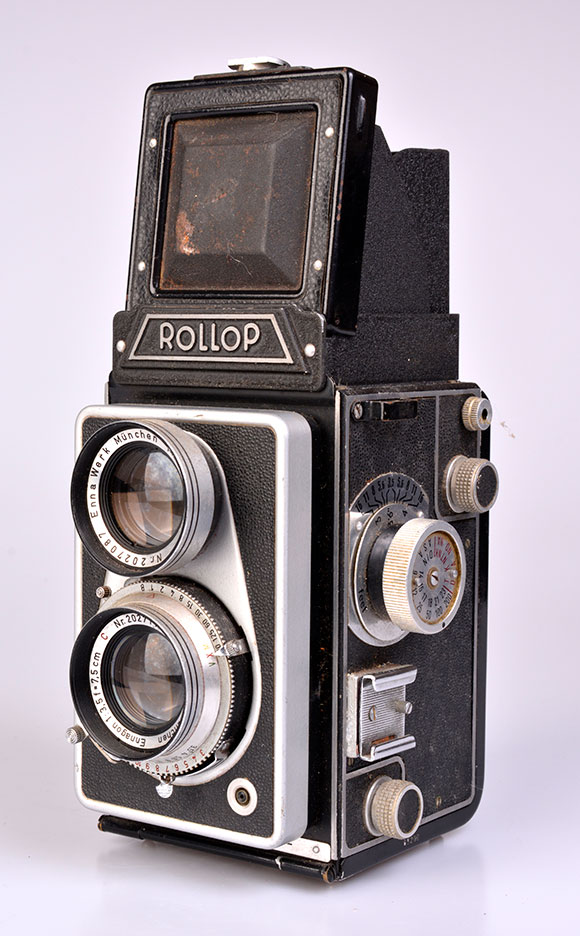
Second Sight
The idea of using a pair of matched lenses for viewfinding and taking dates back to the earliest days of photography and various designs were available during the latter half of the 19th century. Many had simple straight-through viewfinder modules that were coupled to the main camera body, but by the early 1880s the reflex-type finder had appeared on a number of models. After the introduction of flexible rollfilm, it became possible to design more compact twin lens cameras with all-metal rigid bodies.
A young German engineer called Reinhold Heidecke was working at Voigtländer when the First World War began and he was asked to design a camera that could be used by soldiers in the trenches. He came up with what was essentially an upside down twin lens reflex – it could take photographs over the top of a trench without the user getting shot in the process. Heidecke built a prototype of his ‘trench camera’, but it didn’t get any further than this. After the war, he returned to his TLR concept as a means of providing a portable and easy-to use camera capable of high-quality results… only now it was operated the right way up. Voigtländer rejected the idea on the grounds that the likely sales wouldn’t justify the cost of tooling up, so Heidecke decided to go it alone and obtained financing for the project from a former colleague, Paul Franke.
• Best film cameras in 2021
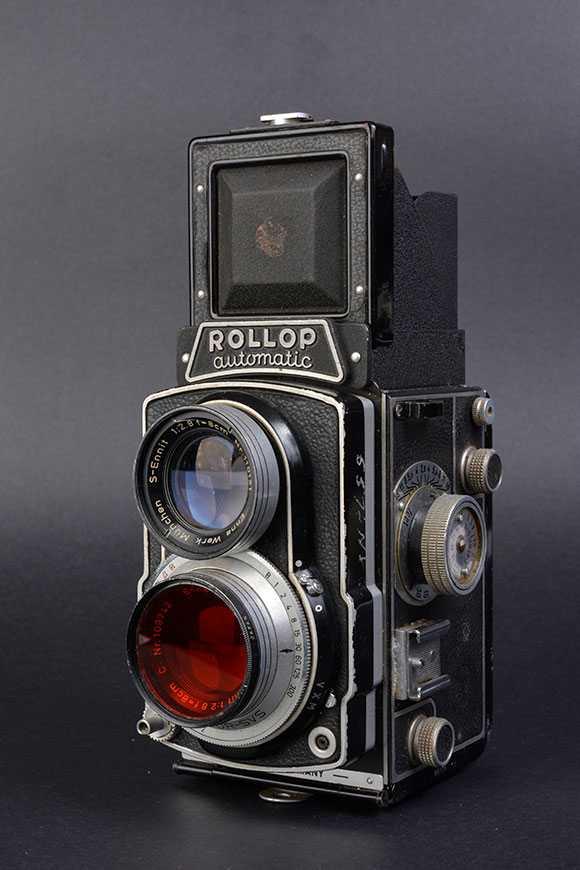
In 1919 the company of Franke & Heidecke was established in the German city of Braunschweig in north-central Germany. After dabbling with a couple of stereo cameras, F&H introduced their first rollfilm TLR at end of 1928. It was simply called the Rolleiflex – thename derived from roll, Heidecke, and reflex. This camera used 117 rollfilm, which was advanced via a wind-on knob and gave six 6x6cm frames.
Sales started in 1929 and by the end of the year the company had back orders for 8,000 cameras, enough to convince a bank to loan the funds for a new factory that commenced production in 1932. By this time, 28,000 original Rolleiflexes had been sold and the first camera to be made at the new factory was the 4x4cm format ‘baby’ Rolleiflex that used 127 rollfilm. However, the most important development in that year was the introduction of the Mark II 6x6cm Rolleiflex – now known as the original Standard Rolleiflex 620 – which used 120 film to give 12 exposures on a roll (double the previous count). This model also introduced the lever type film winder, and had aperture and shutter speed setting scales that were visible in a window on top of the viewing lens, making it much more convenient to use.
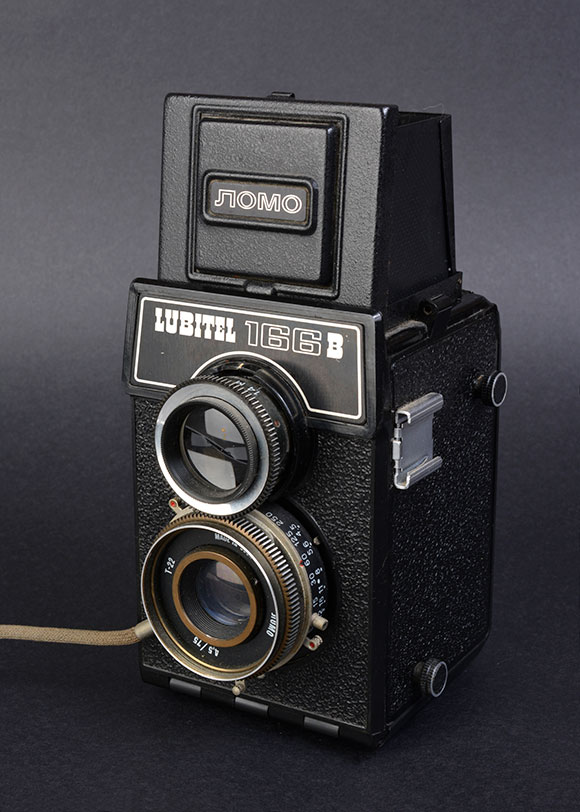
Rolling On
The success of the Rolleiflex convinced rival German camera makers Voigtländer and Zeiss Ikon to get in on the act while, to expand their offerings, Franke & Heidecke introduced a budget-priced TLR line called Rolleicord. The first Rolleicord, introduced in 1933, had distinctive stamped metal ‘art deco’ body panels; however, this wasn’t popular with buyers and was subsequently replaced with a simple black-painted finish only a year later.
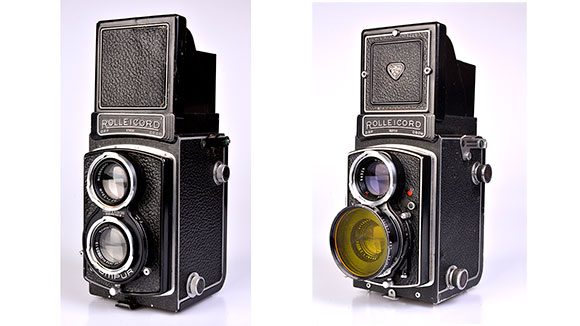
The next big development came in 1937 with the launch of the Rolleiflex Automat, which provided automatic recocking of the shutter when the exposed frame was advanced. By 1938, 300,000 Rolleiflexes had been sold and the 400,000 milestone was reached a short time later in 1940, although by now World War II had slowed down both product development and production. The Rollei factory was damaged by RAF bombing in 1944 and, at the end of the war, Braunschweig was occupied by the British Army.
Camera production was restarted on a small scale with the entire output sold to the British Ministry of Defence. In various versions, the Rolleiflex Automat continued in production until 1954 and was followed by the “3.5 Rolleiflexes” (so named because they all have an f/3.5 taking lens of one type or another). The significant models were the 3.5E, which was the first Rolleiflex with a built-in selenium-type lightmeter (introduced in 1956) and the 3.5F (1958) which went a step further and had a coupled lightmeter. A parallel line of Rolleiflex f/2.8 models commenced in 1949 with the 2.8A Type 1, which had an 80mm f/2.8 Tessar lens and was hurried into production to compete with the Hasselblad 1600F.
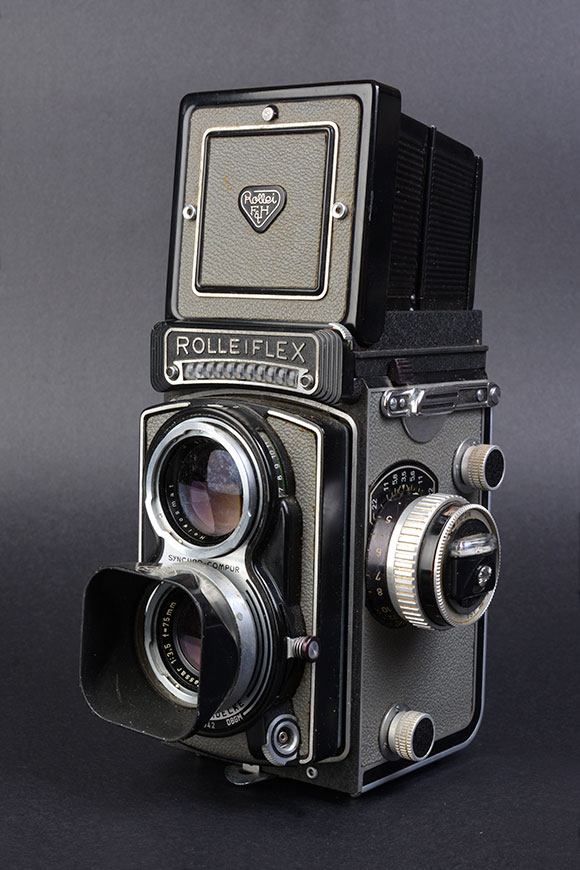
Multiple Twins
During the 1950s and 1960s, the 120 rollfilm TLR was at the height of its popularity, the market driven by the evergreen 6x6cm Rolleiflexes and Rolleicords, but now contested by many Japanese camera makers too. These included Minolta (which introduced its first TLR back in 1936), Olympus, Ricoh, Yashica, Elmo, Petri (under its earlier guise of Kuribayashi Camera Works), Tokiwa Seiki (which used the brand name Firstflex), and Mamiya. It’s also worth noting that a number of smaller manufacturers made TLRs, including Italy’s Ferrania and the British company MPP, who built what were essentially Rollei copies called the Microcord and the Microflex.
• Best DSLRs in 2021
In early 1957, Mamiya turned the TLR market upside down by introducing the first rollfilm model with interchangeable lenses or, to be more precise, interchangeable lens pairs. The Flex C Professional was the beginning of a long line of Mamiya interchangeable lens 6x6cm TLRs that developed into two lines – the C3 series and the lower-priced C2 series – and remained in production until 1995, a total span of 47 years. The last of-the-line C330 Professional S was introduced in 1983. The lens pairs are mounted together on a plate clipped to the camera via a sprung wire arrangement, and there was a choice of seven focal lengths from a 55mm wide angle (equivalent to 30mm) to a 250mm telephoto (137mm). The system also included an eye-level viewfinder and a porro-type finder with built-in metering.
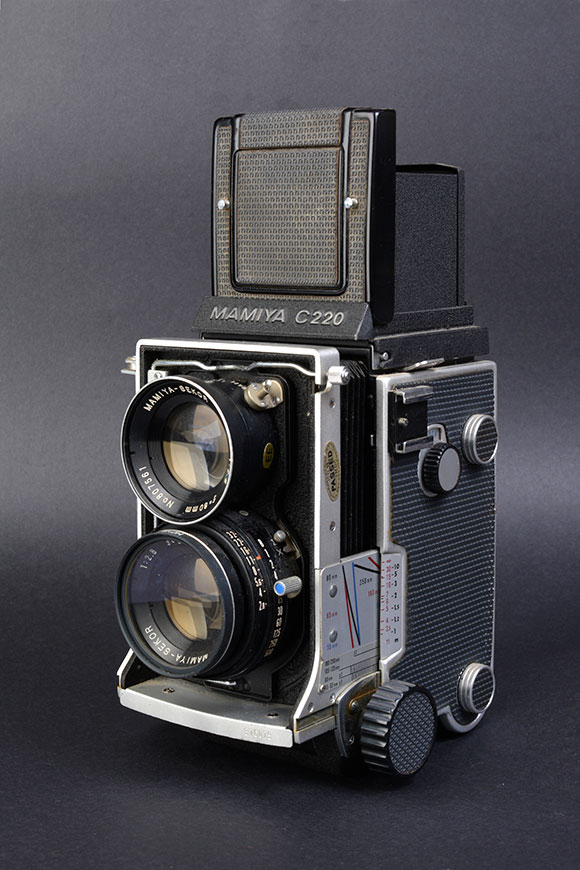
For the record, the Zeiss Ikon Contaflex 35mm TLR introduced in 1935 also had interchangeable lenses, but only the taking lens could be swapped. This camera didn’t remain in production for very long and it’s estimated only around 7,500 units were made (making it highly collectible today, of course). It can, however, lay claim to being the world’s first camera with a built-in photo-electric-type exposure meter.
As most camera makers switched their attention to, in the main, 35mm SLRs, Rollei stuck resolutely with its 6x6cm TLRs. The millionth Rolleiflex TLR was sold in 1956. From 1958 to 1976, Rollei marketed the T-series cameras, which were essentially ‘economy’ versions of the 3.5 fitted with a 75mm f/3.5 Tessar lens. The Rolleiflex T1/2/3 series was a huge success and production would have finished in 1971... except the British Army placed an order for 5,000 cameras to be delivered over a period of five years. A notable feature of the T cameras was switching between the 6x6cm and 4.6x6cm formats with automatic frame counter adjustment.
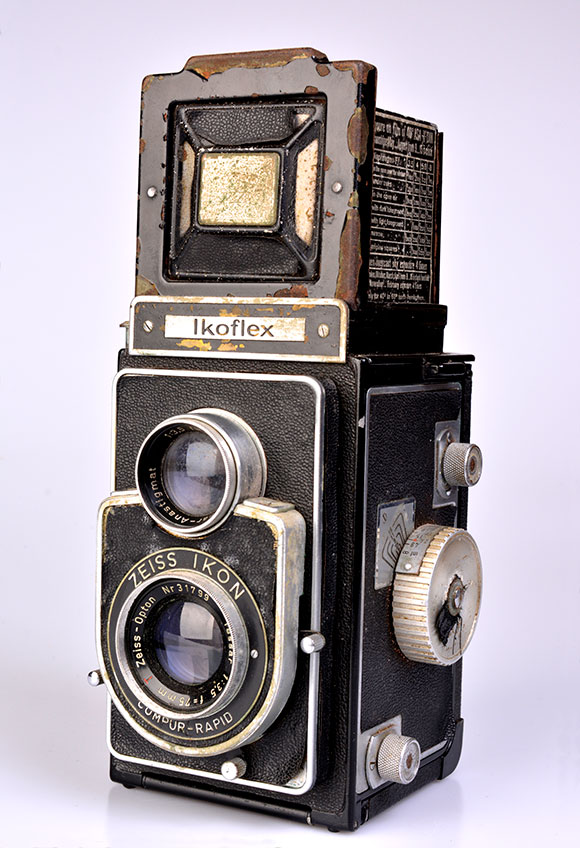
In answer to Mamiya’s interchangeable lens cameras, Rollei first offered the Tele Rolleiflex in 1959, which had a Zeiss 135mm f/4.0 Sonnar lens, but also an f/4.0 viewing lens. This was something of a drawback so it sold in fairly modest numbers (about 5,000 examples). However, Rollei built another batch of around 3,370 Tele models from 1970 to 1974. A Wide-Angle Rolleiflex with a Zeiss 55mm f/4.0 Distagon lens was available from 1961 to 1967, but again it was only made in comparatively small numbers.
The Long Goodbye
Officially, volume production of Rolleiflex TLRs ended in 1979, although orders were being filled from existing stock well into the early 1980s. Following the resolution of a financial crisis in 1982 (the first of many to come), the new Rollei Fototechnic GmbH resurrected the 2.8F with a special edition featuring 23-carat gold plated external parts and alligator skin inserts. Another special followed in 1984, but then in 1987, Rollei reintroduced a proper production camera, the Rolleiflex 2.8GX with a Rollei Planar HFT 80mm f/2.8 lens and ‘modern’ features like TTL centre-weighted average metering and TTL flash metering.
The 2.8GX remained in production in limited numbers – essentially being hand-built to order – until what was left of the original Rollei finally disappeared in early 2015. The Rollei brand name is still used in Europe, but is now merely a licensing arrangement. More noteworthy though, is that Reinhold Heidecke’s basic design changed little over 85 years, an indication of just how brilliantly it was conceived originally.
• Best mirrorless cameras in 2021
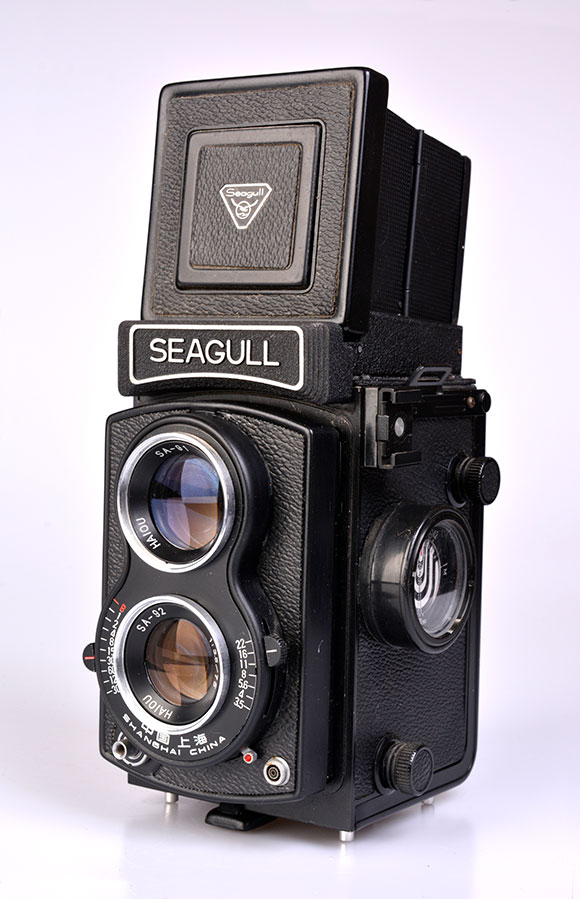
For a great many photographers from the 1930s through to the 1970s, the TLR was a Rolleiflex and a Rolleiflex was always a TLR, although the branding was used on both 35mm and 6x6cm SLRs. There’s little doubt it was these models that kept the configuration alive for this long despite its drawbacks, with a little help from Mamiya, which stuck with the TLR long after it had introduced both 6x7cm and 6x4.5cm SLR systems. Honorable mentions also have to go to Yashica, which maintained a line-up of affordably priced 6x6cm TLRs from around 1953 until 1986, culminating in the immensely popular (relatively speaking that is) Yashica Mat-124G.
Today, the TLR still polarizes opinions, even among the film revivalists looking for a truly different camera experience. Many photographers still think it’s an anachronism, while others love its inherent sturdiness and slowness. The reality is that it’s probably a mixture of both, but the good news for anybody keen to jump into medium format film photography is that the TLR is still the most affordable route, aside from a ‘toy’ camera like the Holga or Diana. Having said that, prices are on the rise, especially the C-series Mamiyas and the Yashica Mat-124G, which is one of the more usable models for beginners. The more collectible Rolleiflexes are very expensive indeed and even the more common models command a price premium because of the name badge.
Shop carefully, because it’s easy to pay too much, and don’t discount the later-vintage Rolleicords (model III through to the many variants of the V), which are excellent alternatives with, these days, pretty much the same kudos. Also bear in mind that the TLR’s fundamentally basic design – including the mechanical leaf shutter – means that even a pretty shabby-looking example is very likely to be mechanically sound but still check everything anyway).
There’s no question that the rollfilm TLR is an acquired taste, but once acquired, it’s a taste that you’re going to want more of.
Read more:
Best film for 35mm, roll film and sheet film cameras
Best darkroom equipment in 2021
Dictionary of photography
Best cameras for low light
Best video-editing software
Get the Digital Camera World Newsletter
The best camera deals, reviews, product advice, and unmissable photography news, direct to your inbox!

Paul has been writing about cameras, photography and photographers for 40 years. He joined Australian Camera as an editorial assistant in 1982, subsequently becoming the magazine’s technical editor, and has been editor since 1998. He is also the editor of sister publication ProPhoto, a position he has held since 1989. In 2011, Paul was made an Honorary Fellow of the Institute Of Australian Photography (AIPP) in recognition of his long-term contribution to the Australian photo industry. Outside of his magazine work, he is the editor of the Contemporary Photographers: Australia series of monographs which document the lives of Australia’s most important photographers.
